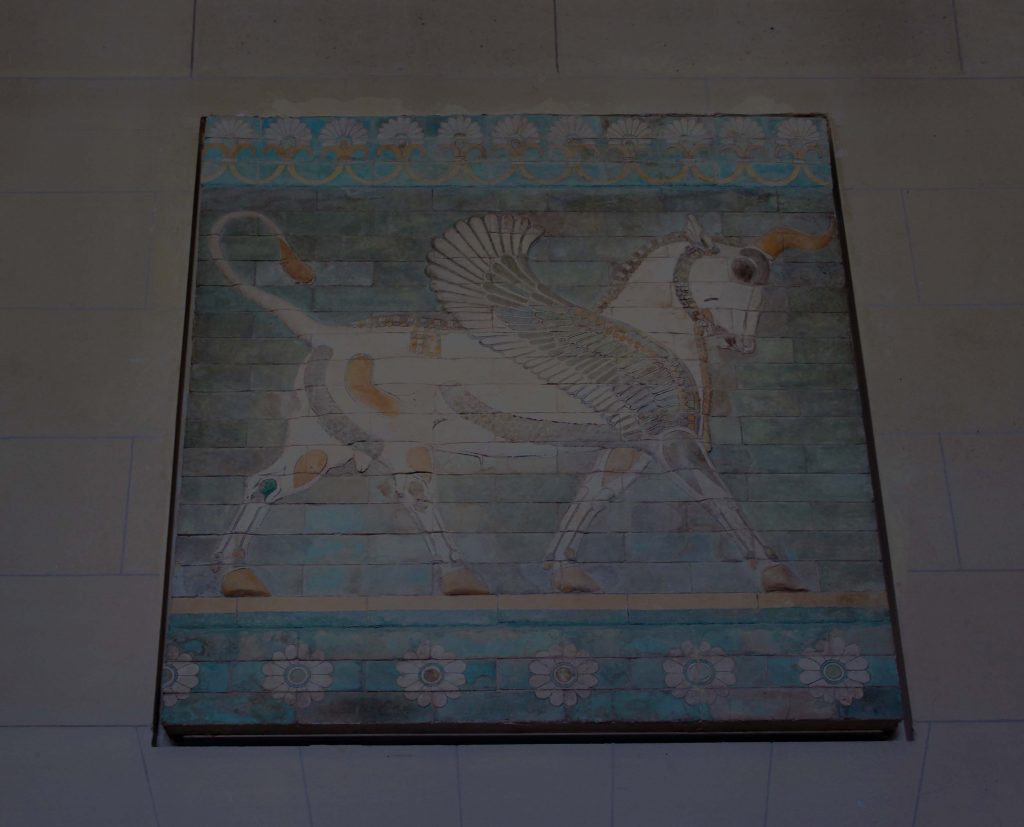Action 5 | Grad Studio I
Teammate: Zahra Jalali

Where does cultural heritage rightfully belong?
The picture below is a small part of a collection in the Louvre museum called ancient Persia. I took these pictures on a holiday trip I went to Paris with my family a couple of years ago. The artifacts in this section are some of the most coveted pieces of cultural and historical identity in Persian art that date back to 3000 BC.
Starting in 1885, French archaeologists carried out wide-ranging excavations in historical sites of Iran. Most of the artifacts they discovered — tens of thousands — ended up in the Louvre. Some of these artifacts were given away through legal contracts, but many of them were looted.
Being in the presence of these artifacts after only seeing them in history books was a mixture of pride and loss. However, for most Iranians, these artifacts will only ever exist in books since the ability to obtain a visa and travel to western countries is still a privilege for a few.

Encyclopedic museums such as The British Museum and the Louvre are considered the centers of history in the world. These centers, however, house many disputed and sometimes stolen artifacts from all over the world, including Africa, indigenous cultures of Australia and Canada, the Middle East, and Iran. Many of these disputed cultural properties were taken from these countries in the context of imperialism, colonialism, or war. From early on, the field of archaeology was heavily involved in the political attempts of colonialism. This relationship became stronger during the 19th century when archaeology was institutionalized as a field of study, aided by the acquisition of historical artifacts.
There are many arguments for and against the repatriation of cultural heritage. Colonial narratives surrounding the discovery of these artifacts historically have not supported the notion of repatriation. Museums often argue that if objects were to be given back, they would not attract as many visitors, and in many cases, they will not be in a secure and safe environment.
Also, many argue that Encyclopedic museums are presenting these artifacts as a global culture to the entire world and not as local and national culture.
Objects Matter!
For many of these nations, this heritage is beyond the decorative qualities of these objects. Objects carry values: economic, social, cultural, symbolic, and personal. For many Indigenous cultures, these artifacts act as a visual archive that narrates their stories and their history. This means that the repatriation of these objects is connected to the cultural survival of the nations oppressed by colonialism. The notion of rejecting repatriation is the legacy of centuries of colonial power that continues to this day.
Objects play an integral role in the collective identity of a community, and to own them is to own people’s identity and their narrative.
Moreover, the true value of an object presents itself when it’s displayed in their original context rather than an unfamiliar and irrelevant one.
Who gets to tell stories?
Museums furnished by colonial artifacts usually offer an abstract and incomplete image of colonized nations to the world while considering themselves at the center of this power and knowledge. They tell the stories of these people and their identity from their own partial and biased perspective.
The story behind many of these cultural objects is complicated. There are many questions entangled with a lot of these artifacts. Where do these objects rightfully belong? Who gets to own cultural identity? And who gets to tell these stories and how do they choose to tell them?
